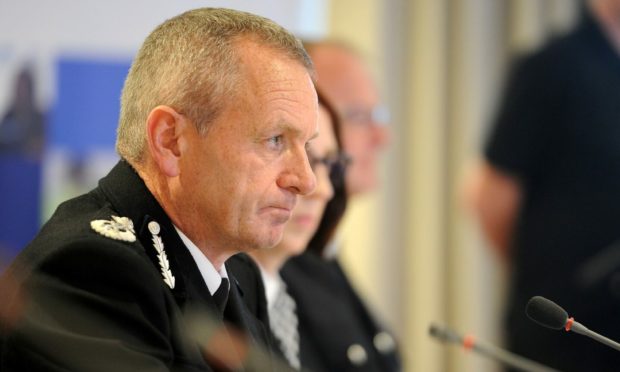Local police divisions in the north and north-east lost dozens of officers last year as resources were diverted to national teams.
New figures show the north-east division was reduced in size by 34 officers between March 2020 and the same month this year, while in the Highlands and Islands there was a decrease of 11.
Of the three wider regional commands in Scotland, the “north” area – which includes Tayside, the north-east and the Highlands and islands – was the only one to shrink, going from 637 officers to 609.
The fall compared to the “east” area, which added 19 officers to its ranks, while there was an increase of 10 in the “west”.
Under the Police Scotland structure, officer posts are split over three tiers – local, regional and national – with the 13 local divisions supported by specialist teams that operate across the country.
All 13 of the local divisions across Scotland lost officers last year, with 521 leaving in total, while at the same time the ranks of national units were swollen by 360 personnel.
The data emerged as Chief Constable Iain Livingstone faced calls to make more progress on his “authentic commitment” that the force would move to “decentralise” posts from the central belt, which he made in Inverness four years ago.
National teams include those investigating organised crime, cybercrime, and the abuse of children and vulnerable people.
Flexible response unit
In 2019, the force also established the flexible response unit, which had 300 officers last year but is now understood to be down to about 225.
It has been used to enforce coronavirus lockdown rules, as well as respond to football disorder and climate protests.
Calum Steele, general secretary of the Scottish Police Federation, said: “Local policing officers have long since been the poor relation in policing.
“Whenever any new demand is created or identified by the service, the first place that resources are removed from is the local policing response.
Whenever any new demand is created or identified by the service, the first place that resources are removed from is the local policing response.”
“That leaves the officers that are left working longer and harder, in more dangerous environments, and the community at large receiving a poorer overall service.”
In total, there were 17,283 full-time equivalent (FTE) police officers in Scotland in March this year, which was down by 148 FTE officers on the same month in 2020.
The national teams, meanwhile, increased their headcount size from 1,596 to 1,956.
Mr Livingstone promised in 2017 to bring forward decentralisation plans while speaking at a meeting of the Scottish Police Authority (SPA) board in Inverness, where the closure of the city’s police control room was rubber-stamped, as was the co-location of a new National Database Enquiry Unit (NDEU) between the Highland capital and Govan.
‘Thin blue line’
Despite decreasing in size by 23 officers in the last two years, data released under freedom of information laws shows the local Highlands and islands division has increased its overall officer headcount since 2016, going from 656 to 673.
Dumfries and Galloway was the only other one of the 13 local teams in Scotland to grow in size, with the rest being cut.
However, at the same time the figures show that the Highlands and Islands has lost nine of the 92 civilian staff jobs that were based in the region in 2016.
The north-east division has shrunk by 31 officers in five years, meanwhile, as well as losing six from its staff headcount.
Matthew Reiss, a former police chief inspector who now serves as councillor for Thurso and Northwest Caithness, said: “I think the chief constable, Mr Livingstone, who I’ve got a lot of respect for, is trying to do the best he can in difficult circumstances.
“However, there is no doubt the general public still has a strong desire to see uniformed officers on patrol.
“N division – what was formerly the Northern Constabulary area – is the largest policing area geographically in Europe, and the ‘thin blue line’ is at times very thin in the remotest areas.
“I think it is of some concern that there hasn’t been more progress.
“I believe the chief constable is a man of his word, and given the current financial restraints, I would still hope further actions can be taken to improve cover in remote areas of Highland.”
Tess White, Scottish Conservative MSP for north-east Scotland, said: “There are fewer officers on the beat in the north-east than there were in 2013, while violent crime has increased.
“That is a trend that must be reversed immediately.”
‘Frontline policing is changing’
Deputy Chief Constable Will Kerr said: “Frontline policing is changing and goes beyond the uniformed officers on the street that the public will see, with the growing range of online threats becoming a bigger part of our policing response every day.”
He added: “We remain committed to building a modern and flexible workforce that reflects and serves all our communities and their changing needs.
“The establishment of the Inverness Resolution Team, last year, was a major investment in services in the north. Additionally, 15 new assistant posts were also created in the Highlands to support this specialist team of officers and staff.”
